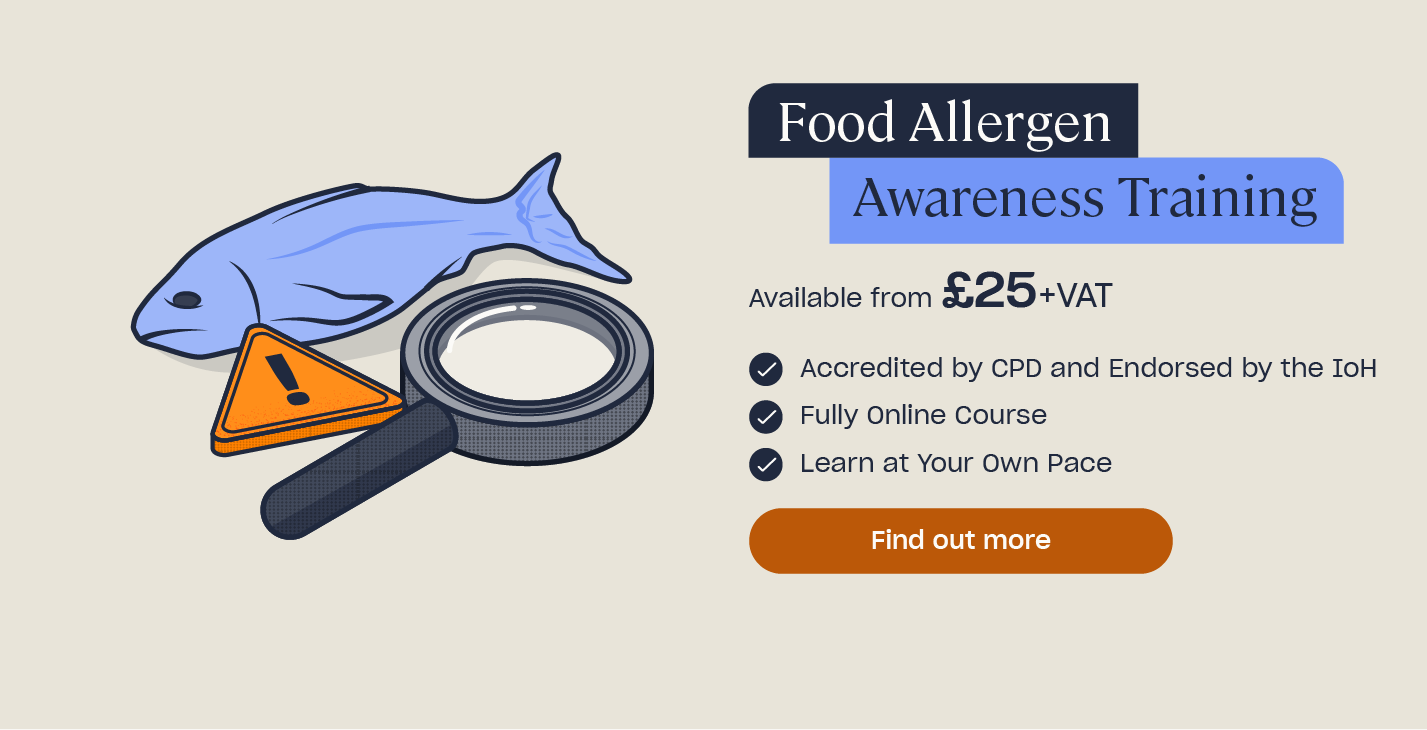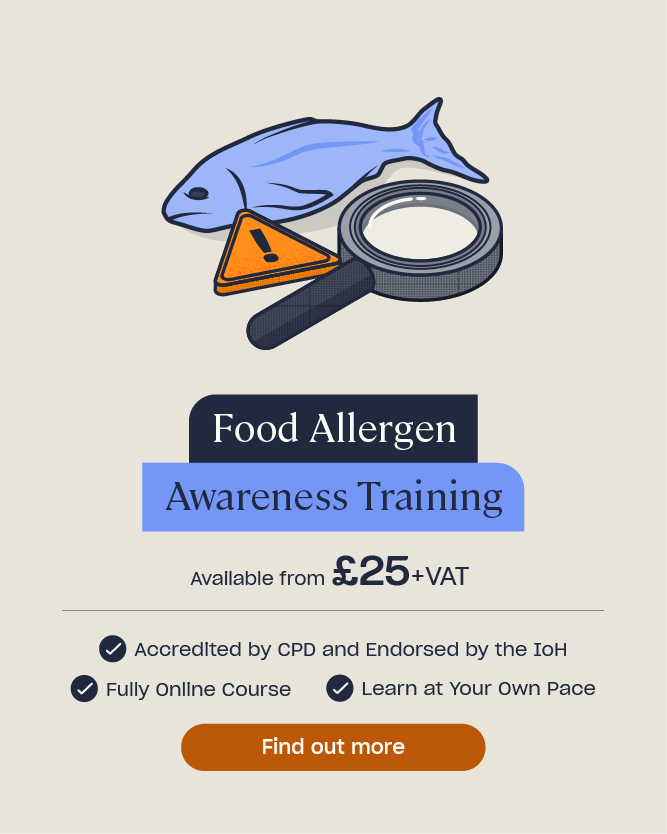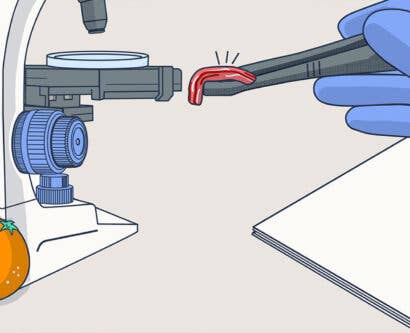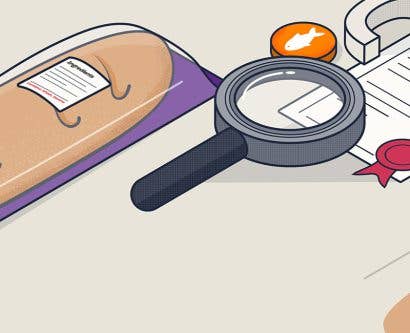Spotting the Signs of an Allergic Reaction to Food
In the UK, approximately 2 million people are living with a diagnosed food allergy. For some people, consuming even trace amounts of an allergen is enough to cause an allergic reaction. In severe cases, this can be life threatening. Therefore, if you work with, or around, people that suffer from a food hypersensitivity, it’s imperative that you understand the signs and symptoms of an allergic reaction and how to respond in the event of an emergency.
In this article, we will outline the signs of an allergic reaction that you need to be aware of, explain how long it typically takes for these symptoms to show and discuss what to do if you notice any of the symptoms occurring.
What is a Food Allergy?
A food allergy is an immune system reaction by the body against a specific ingredient that the person has consumed, causing an allergic reaction. The most common symptoms are an itchy mouth and throat, a red rash and swelling of the face. More often than not, these symptoms are mild. However, in some cases, an allergic reaction can be severe and life-threatening.
Any food has the ability to cause an allergic reaction, however, allergies to certain foods are more common than others. There are 14 named allergens that you need to be aware of. By law, these allergens must be declared if they are used as an ingredient in a food product.
The 14 named allergens are:
- Celery.
- Cereals containing gluten.
- Crustaceans.
- Eggs.
- Fish.
- Lupin.
- Molluscs.
- Milk.
- Mustard.
- Nuts.
- Peanuts.
- Sesame.
- Soya.
- Sulphur dioxide and sulphites.
To help you remember the 14 named allergens, we have a free downloadable poster for you to use or display in your workplace. You can find it here.

Some people find their food allergy is easy to manage as their reactions are mild and can be kept under control by making careful food choices. For others, however, their food allergy can be life-threatening, and they need to seriously consider what they are eating on a daily basis.
It’s essential to remember that while both conditions should be treated seriously, a food intolerance is not the same as a food allergy. You can learn more about food intolerances here.
Anaphylaxis
Anaphylaxis is a severe allergic reaction to a specific food ingredient and can be life-threatening. It occurs because the immune system mistakenly identifies harmless substances – such as foods and medicines – as harmful ones, and so releases a range of chemicals into the body to deal with the perceived threat.
The chemicals that are released into the body during an anaphylactic shock, such as histamine, cause the body’s blood vessels to widen, blood pressure to drop and the airway to tighten, restricting breathing.
This type of allergic reaction is sometimes referred to as an ‘anaphylactic shock’. For more information, check out our article: Anaphylaxis FAQs.
Need a Course?
Our Food Allergen Awareness Training and Anaphylaxis Awareness courses are designed to ensure learners have a thorough understanding of allergens and to help food handlers identify and label allergens correctly in order to comply with allergen laws and keep customers safe. If you work in the manufacturing industry, our Food Allergens in Manufacturing course will be more suited to your food business.
What are the Signs of an Allergic Reaction to Food?
The symptoms of an allergic reaction to food can differ between people, and the severity of their allergy. However, it’s essential that you can recognise the signs of an allergic reaction so that you can respond calmly and appropriately.
The most common symptoms are an itchy mouth and throat, a red rash and swelling of the face. These are likely to occur rapidly after eating the allergenic food.
Other reactions include:
- Watery eyes, sneezing and a blocked nose.
- Flushing of the skin.
- Hives (nettle rash).
- Difficulty swallowing or speaking.
- Severe asthma.
- Alterations in heart rate.
- Abdominal pain, nausea or vomiting.
- Sudden weakness due to a drop in blood pressure.
- Collapse and unconsciousness (anaphylactic shock).

In children, symptoms can also include:
- Irritability or mood swings.
- Nausea or vomiting.
- Diarrhoea.
- Bloody stools.
Oral allergy syndrome – which is a hypersensitivity to plant-based foods – can also cause the lips, mouth, tongue and throat to feel irritated or itchy. Symptoms are similar to those of hayfever, are usually mild and will calm down within an hour, without the need for medical intervention. You can find out more about oral allergy syndrome in our article, here.
It’s important to remember that people will display differing signs of suffering from an allergic reaction. They may present with one, several or all of the symptoms above.
What are the Signs of Anaphylaxis?
The symptoms of anaphylaxis usually develop immediately after eating an allergenic food but, unlike an allergic reaction, can quickly worsen.
The symptoms may initially mirror those of an allergic reaction but often lead to:
- Swelling of the mouth, throat or tongue.
- Swollen eyes, lips, hands and feet.
- Itchy or raised red skin.
- Abdominal pain, nausea and vomiting.
- Difficulty breathing and swallowing.
- Wheezing.
- Feeling lightheaded or faint.
- Collapse and unconsciousness.
Anaphylaxis is a medical emergency that can be life-threatening if it’s not treated quickly.
How Long Do Allergic Reactions Take to Start?
Most food allergy symptoms typically start to develop between a few seconds and a few minutes after eating the offending food.
However, in rare cases, there can also be a delayed reaction – where the symptoms take anywhere between several hours to days to occur – so it’s important to remain vigilant regardless of how long it has been, and to seek medical attention if necessary.
Delayed reactions are sometimes seen in children who develop eczema as a symptom of their food allergy, and this can easily be mistaken for a dermatological issue rather than an allergic reaction.
The length of time it takes for symptoms to show can sometimes be explained by the type of food allergy the person suffers from, although there are always exceptions.

According to AllergyUK, food allergies can be divided into three types:
- IgE-mediated. With this type of allergy, it is triggered by a person’s immune system producing the antibody immunoglobulin E (IgE), and the symptoms typically show between a few seconds and a few minutes after eating the offending food. This is the most common type of allergy, and it has a greater risk of anaphylaxis.
- Non-IgE-mediated. This type of allergy is caused by other cells in the immune system, not IgE, and is more likely to produce a delayed reaction in symptoms.
- Mixed IgE and non-IgE-mediated. Occasionally, people may experience symptoms from both of the first two types.
What to Do When Having an Allergic Reaction to Food
When it comes to allergic reactions, they can vary in terms of severity. However, they can be a frightening experience for both the person concerned and any witnesses nearby. In some cases, the person may be experiencing a reaction for the first time. Your knowledge of the signs and symptoms of allergic reactions to food could therefore be crucial.
If someone is having a mild allergic reaction, taking a medication called an antihistamine can help to relieve the symptoms and it’s unlikely that the person will need further medical treatment.
However, if someone nearby is having a severe allergic reaction, you should:
- Make sure the person is comfortable, ideally lying down or sitting in a chair. If they are having difficulty breathing, help them to lay down flat.
- If the person has an auto-injector, such as an EpiPen, Jext Pen or Emerade Pen, ask them to locate and use it. The casualty might be able to inject themselves, otherwise you can assist them.
- Call 999 for an ambulance as soon as possible and explain that the person is having a severe allergic reaction.
- If there’s no improvement after 5 to 10 minutes, use the second auto-injector if a second dose is available. This must be administered in the opposite leg to the first injection.
The main points to remember are: keep calm, call an ambulance and reassure the person.

What to Do If Someone is Having an Anaphylactic Shock
As we’ve established, anaphylactic shock is a medical emergency that can be life-threatening if it’s not treated quickly. It’s therefore essential that you know what you can do to help as acting quickly and responding appropriately could save someone’s life.
There are several steps that you should take if you think that somebody is experiencing the symptoms of anaphylaxis.
If the person is conscious:
- You should first ensure the casualty is comfortable, ideally lying down or sitting in a chair. You can assist the casualty to lay down and raise their legs or sit them up and bend the knees if breathing is difficult.
- You should then use an adrenaline auto-injector if one is available. If given promptly this could save the person’s life. The person might be able to inject themselves and will be familiar with how to do so, otherwise you can assist them in applying the injection.
- Once the auto-injector has been used, call 999/112 for the emergency services as soon as possible.
If the person is or becomes unconscious:
- The initial step of first aid for unconscious casualties is to do a primary survey of the person and their surroundings.
- The primary survey is made up of 5 steps – Danger, Response, Airway, Breathing and Circulation, shortened to the initialism ‘DRABC’. It helps you to quickly identify whether there’s an immediate threat to the casualty’s life.
- Once you have carried out the DRABC steps you can administer the adrenaline auto-injector and call for the emergency services as you would if the person was conscious.
Following an anaphylactic reaction, the person should always be admitted to a hospital where they can be monitored, as a secondary reaction may occur hours later.
While many food allergies can cause mild symptoms, in some cases, these can be severe and potentially life-threatening. It is therefore crucial that you can recognise the signs and symptoms of allergic reactions and anaphylaxis. We hope you’ve found this article useful and informative. If you have any questions on any of the topics covered, please don’t hesitate to get in touch with us at High Speed Training on 0333 006 7000.
Further Resources:
- Food Allergen Awareness Training
- What are ‘Allergy Free’ Foods?
- Free 14 Allergens Poster
- How to Spot Allergy Bullying
- Food Allergies: Myth Vs. Fact











